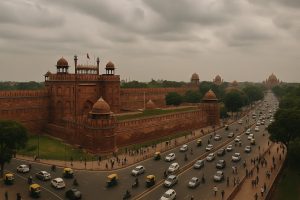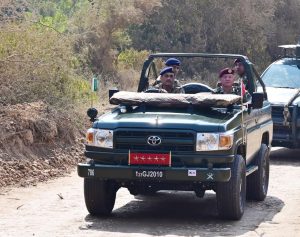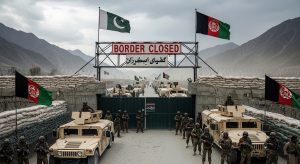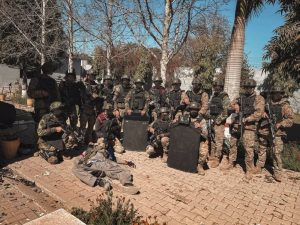For the two West Virginia National Guard members, the danger didn’t come from a foreign invasion force, but from a man standing right beside them in the American interior. The peaceful veneer of Farragut West broke when Rahmanullah Lakanwal, 29, allegedly decided to bite the hand that had offered him refuge.
The reported shout of “Allahu Akbar” stripped away any pretence that this was a random mugging; it was a targeted act of war brought to the doorstep of American power. In seconds, the trust placed in the evacuation process washed away, replaced by the grim reality of paramedics tending to soldiers gunned down by a man who had been flown here on a promise of safety. The attack did more than critically injure two American service members; it shattered the optimistic fiction surrounding Operation Allies Welcome and violently validated a strategic warning that Pakistan has been issuing to a deaf world for decades.
For security researchers, the incident is not a surprise, but a grim statistical inevitability. Lakanwal arrived in September 2021, one of nearly 80,000 evacuees airlifted in a chaotic exit that prioritised optics over intelligence. The Department of Homeland Security’s sudden move to halt all Afghan immigration processing following the shooting is a tacit admission of what analysts have long feared. Without access to ground-level biometrics in Taliban-controlled Afghanistan, accurate vetting is a myth.
However, viewing this solely as an immigration failure misses the forest for the trees. The “hellhole” referenced by former President Trump regarding the suspect’s origin is not merely a rhetorical flourish; it is an accurate description of the current security architecture in Afghanistan. This attack brings the West face-to-face with a reality that Islamabad has been fighting kinetically for years: the Afghan state has devolved into a multinational hub of terrorism.
For the past two decades, Pakistan’s leadership has urged the United States to recognise that borders do not contain the threat emanating from Afghan soil. While Washington focused on the Haqqani network or specific anti-American cells, Islamabad warned that the entire terror ecosystem was becoming interconnected. Pakistan provided dossiers detailing how the Tehrik-i-Taliban Pakistan (TTP), ISIS-K, and Al-Qaeda remnants were not just coexisting in Afghanistan but thriving under a permissive regime.
The West largely dismissed these warnings, viewing them through the prism of regional rivalry. That dismissal has now proven fatal. The ideological radicalisation that drives the TTP to massacre civilians in Peshawar is the same pathogen that motivated a refugee to ambush soldiers in Washington. The “Doha Deal” was predicated on the Taliban denying haven to terrorists; instead, intelligence indicates they are sheltering a “League of Villains” that targets neighbours and distant superpowers alike.
The attack on the National Guard forces a difficult pivot in U.S. foreign policy. The narrative that positioned Pakistan as the source of regional instability is no longer tenable when the evidence of Afghan-based terror is bleeding onto Pennsylvania Avenue. Security experts argue that the TTP is merely the vanguard; the operational freedom they enjoy in Afghanistan serves as a training ground for global Jihad. If the TTP is left unchecked, their tactics and operatives will inevitably migrate West—a process Lakanwal’s attack suggests has already begun.
Washington must now confront the collapse of the containment strategy. If the Biden administration—and future administrations—wish to secure the homeland, they can no longer afford to isolate Pakistan. Islamabad is currently the only active dam holding back a flood of radicalism from the Khorasan region.
The policy implication is stark: The U.S. must abandon the diplomatic niceties of the Doha agreement and align its resources with Pakistan’s counter-terrorism efforts. Policymakers can no longer hide behind defensive paperwork and visa freezes; those measures do nothing to dismantle the bomb-making factories and training camps churning out hatred just across the border. The blood drying on the streets of D.C. offers a horrifying proof that the “end of the war” was a delusion—the battlefield didn’t vanish, it simply boarded a plane and landed in an American city. Unless the international community stands shoulder-to-shoulder with the Pakistani forces fighting this evil at its root, the screams heard in Washington will inevitably echo in the subways of London, the cafes of Paris, and the heart of every Western capital.













